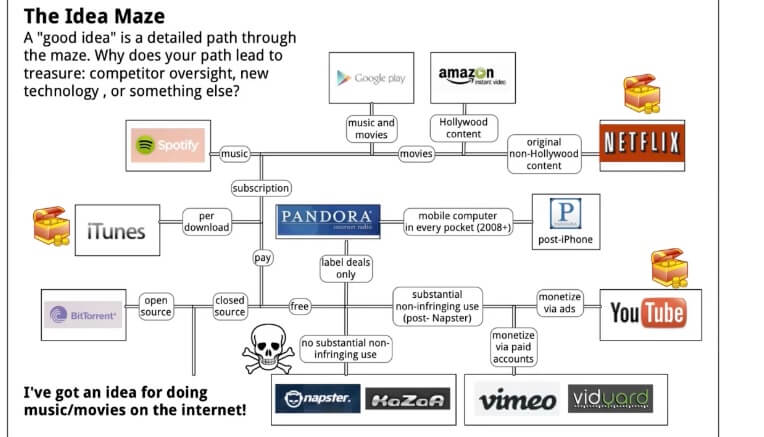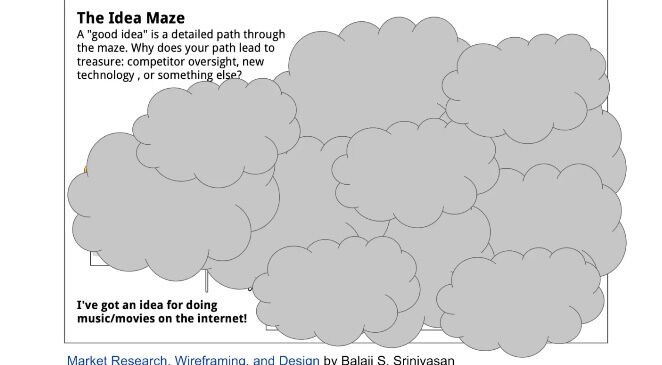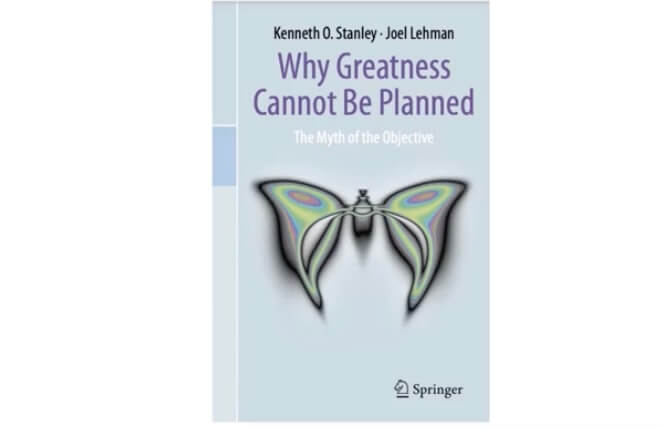My mission is to help everyone to embrace the product mindset. But what is the product mindset? Well, I’m here to help you find out. This question is often followed up by three more: “Can we do it in about three months?”, “Can we do it without changing our organization?”, “Can we do it without causing too many disruptions?”
But the truth is, you can’t adopt the product mindset without changing in some significant ways. These questions are often just a distraction from rolling up our sleeves and getting on with that adoption process.
In this article, I'm going to offer some practical strategies for how you can do just that.
Here's a breakdown of our key talking points:
- Training the product mindset
- The Idea maze vs the deception
- How do we deal with this: proactive strategies
- To wrap up - share the struggle
Training the product mindset
No one is simply born with the product mindset, you have to be trained in it. This demands a different mode of thinking. But what is it? And how do we get to it? That’s what we’re zooming in on in this section.
Asking why
Whether you’re salespeople, an architect, or an engineering manager, it’s pretty much a non-starter unless you can get to the root of why you’re working on a product in the first place.
- What problem does the product solve?
- How is it going to be useful for users in their day-to-day lives?
- Is there a demand for it?
Questions are a good starting point because if we can start asking better questions, we’ll get better answers. And a team of people with a range of different expertise asking questions is going to be much better than just one person asking the question.

Why ask questions?
The fact is we have to be humble enough to accept that we don’t know enough about the way the world is today. We may have certain assumptions about that world that are incorrect. ‘Why’ is a really good starting point for that reason.
The problem is, if we don’t maintain an open mind, we can’t stay agile and adapt. If a product doesn’t take off the way that we’d hoped and we’re not asking these questions, we can’t fix problems when they arise. This is what we define as smart thinking. But how do we get to smart thinking?
The Idea Maze
This is a model that has been brought up by many different types of product thinkers called ‘The Idea Maze.’ Check it out below. 👇

The idea of this is that, when we’re headed down any path with a product, there are a lot of different decisions that we have to make and each of them leads to a different end point. And there’s no avoiding it, some of these decisions will end in death. 💀
The vital lesson to take from this is that we really need to think ahead. We need to anticipate the outcome of these product decisions to make something that is very successful.
The problem is, when you’re trying to plan out your different steps, the maze actually looks like this. 👇

Before Netflix, YouTube or Napster existed, nobody could have foreseen the different steps that these brands had to go through, so what we’re looking at is more of a post hoc analysis of how these decisions were made.
The idea Maze vs the deception
This is the conflict that occurs between our careful planning and the unknown element that is going to occur in any product cycle. The fact is, no product journey is ever going to be the same and we can’t always plan for that. If you want to look at this in more detail, there’s a great book called Why greatness cannot be planned, which looks at that problem on a philosophical level. 👇

A relevant analogy here is perhaps the one of the shore and the lake. We want to get to shore on the other side of the lake. But the problem is that we have an idea in our head of what that shore looks like, but the reality of it is obscured to us. All we can really do is plan one or two steps ahead of ourselves at any given time.
In fact, the objective function becomes a kind of false compass for us. This is the deception element. Having an imagined idea of what the end goal is supposed to look like can lead you in the wrong direction at times. Trying to force objectivity where there’s only subjectivity can seriously derail you.

How does this apply to the product mindset?
The fundamental problem with the product mindset is that we're always going to be in a position of uncertainty to a certain extent. The uncertainty of the world is something that we’re always going to have to contend with, and this definitely applies to building and launching products that are new or interesting.
That uncertainty is something that we need to actively embrace. Uncertainty is a process by which we create resilience, creativity and adaptability. To me, this is the essence of the product mindset.
How objective can you be?
Even when we look at our most objective goals as product managers or product teams, our OKRs, or our KPIs, for example, we can start to think about the goals that we have as being somewhat uncertain. We have an idea of how we want to change the future, but we don't know exactly the way that we're going to do that.
There are plenty of times when startups have started with a particular vision but wound up doing something completely different.
Points of uncertainty
With any startup, the uncertainty is going to be coming at you from all angles all the time. For example:
- Will we be able to maintain the same strategy throughout?
- What are the decision models that we’ll be using going forward?
- Who are our customers and how are we servicing them?
- Which features will be ideal for us?
How can we approximate building something brand new? How do we estimate the exact amount of time or effort that accounts for the full complexity of the project?
All of these are components of how we work as product managers within product teams. All of our knowledge is based on our context, it's based on our understanding of the world. I often bristle at the term ‘product sense.’ You’re supposed to be able to develop a kind of intuition through working with product over a long period. But the problem is that it relies too much on our own lived experience of the world, which is pretty subjective.
Adapting to new models
The models that you’ve applied in the past may not be appropriate for a future set. I've done a lot of work in technology, and with technology, we’re always having to relearn the way that we interact with these objects or the way that people will use them.
There have been great examples in the past of product managers giving their two cents but it ends up skewing the way that the team works. In those kinds of situations, managers might be projecting too much of what’s worked in the past onto what’s happening with the team, rather than just reacting to what’s there.
A good skill to cultivate is the ability to adapt old frameworks and integrate them with what’s new. The problem with marketing is, there isn’t really a sure-fire formula for success, and so a lot of the time we’re just dealing with subjective opinions. And subjective opinions come with uncertainty. You have to embrace the uncertainty.
How do we deal with this?
We can’t just throw up our hands and accept defeat, right? We have to find a way to use the uncertainty to go forward in embracing new methods. But how do we do this? Let’s hone in on some steps you can take.

Listen to feedback
A key aspect of the product mindset is being agile in your approach. The needs of consumers are constantly evolving with the world, and as such, so should our approach to product. At the very beginning of the article, I mentioned that those who fail to adopt the product mindset are those that are resistant to broad organizational change.
They also tend to be set in their ways about what works, and all the feedback in the world won’t change that. Good products are dictated by a strong use case, and use cases are dictated by needs. If you’re not gathering feedback you’re not staying receptive to needs.
Burn through the fear
‘Fear’ is a keyword here, and it goes hand in hand with the concept of uncertainty. You must find the thrill in the uncertainty rather than the fear. You have a job that’s going to keep you on your toes all the time, so why the resistance? Learn to love the struggle and the fast-paced reconfiguration that has to occur.
Be more curious
Accept that this is all a vital learning experience, both personally and professionally. Rather than making concrete statements, try asking more questions. This includes not just your customers, but also your co-workers and everyone that you’re working with. Embracing new approaches to product demands collaboration and if you can’t stay open to other areas of expertise, you’re not going to get very far.
To wrap up– share the struggle
The likelihood is that everyone within the organization is going to be facing the same struggle, right? You can embolden yourself and your team by being honest about this. A lot of people are afraid of sharing uncertainty because they think it makes them look weak.
But if you, as a product manager, can share that you’re still learning, your team is going to be much more likely to open up to you, and you can start to build new strategies! Share with your team examples of how uncertainty has guided the most groundbreaking innovations, share personal anecdotes and case studies! Be a champion for the product mindset! 🏅



 Follow us on LinkedIn
Follow us on LinkedIn



